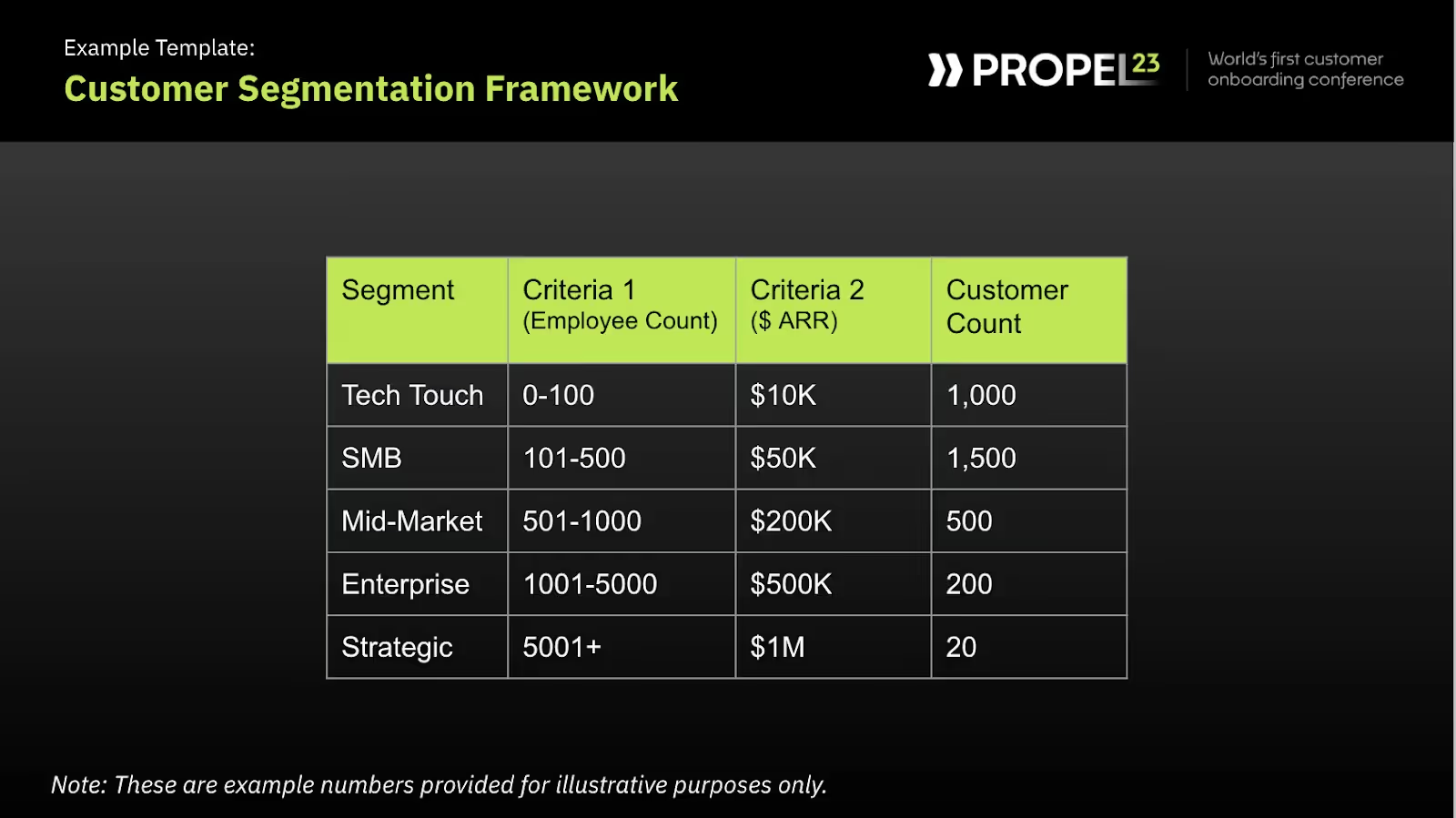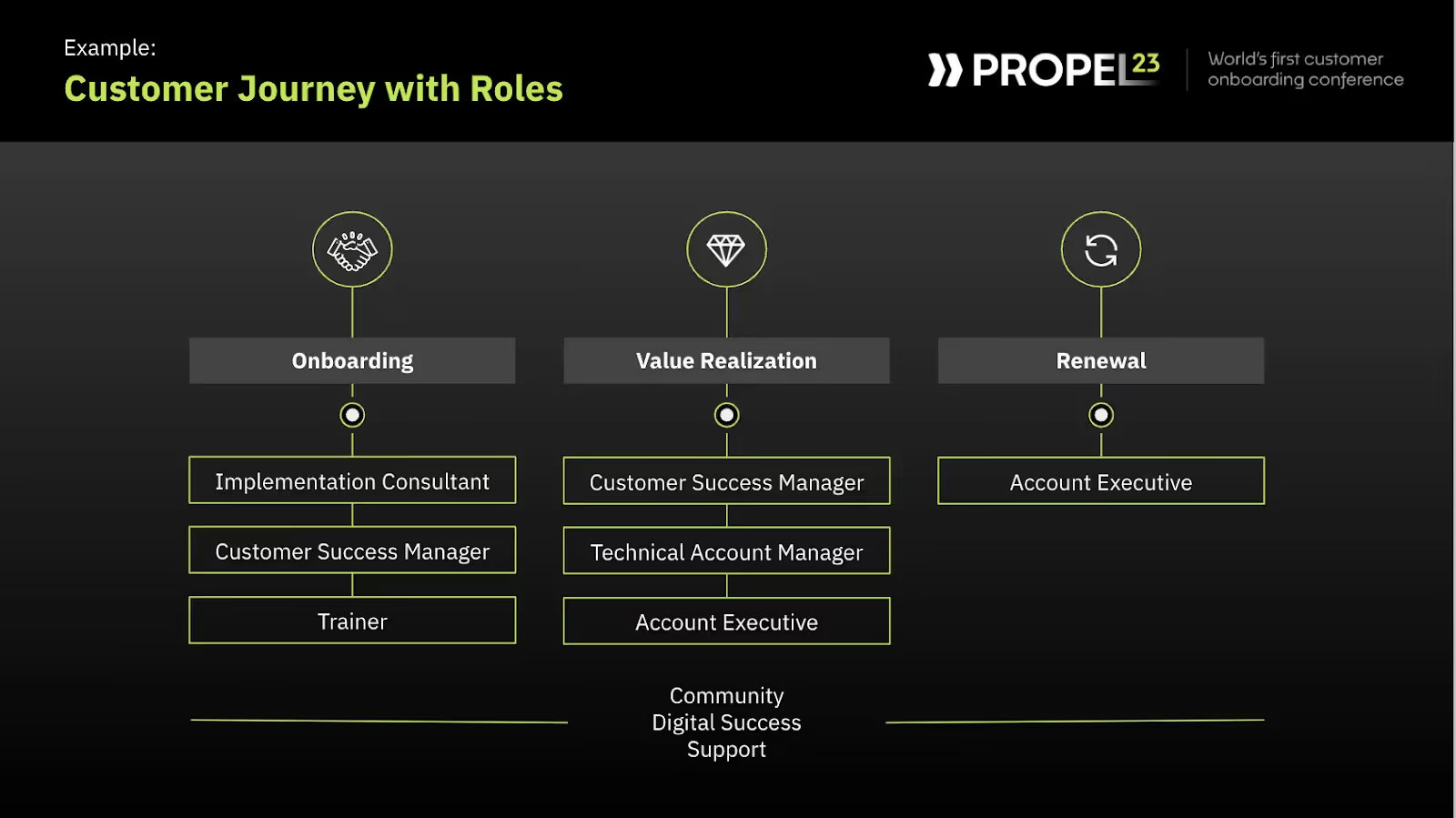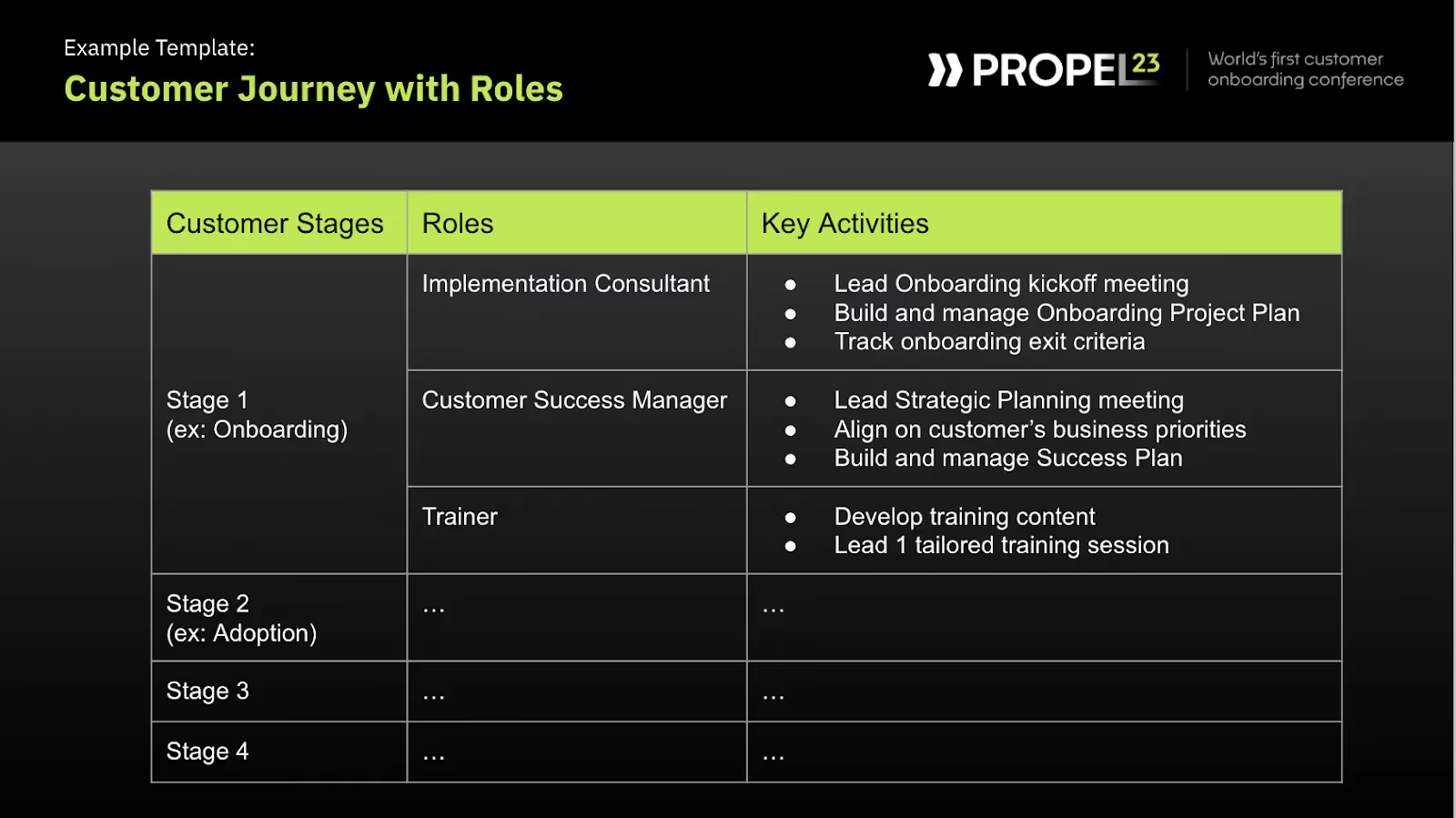Further reading
- How Sonam Dabholkar, Gong, found her ikigai in CS Ops
- Building a CS Ops function from scratch
- How to perfect high-touch customer onboarding
- Designing your customer onboarding and adoption journey
- How CS Ops helps drive smooth customer onboarding
Sonam Dabholkar is a versatile and result-oriented leader with a skill set spanning Change Management, Customer Success & CS Operations. As the Director of CS Ops at Gong for the past 3+ years, Sonam and her team have built the strategic programs, process & workflow automation, data analysis, metrics reporting, and technology stack that enable the Customer Success org to create raving customer fans.
In her session at Propel23, Sonam discussed how CS Ops has evolved at Gong, the guiding principles they employ for their customer orgs, building and evolving the customer journey, and the learnings from her experience.
How the CS Ops function evolved at Gong
In the beginning, the post-sale team at Gong was mostly reactive. They were a lean team of around 200 employees with only customer success management and support teams in place. Their main focus was helping customers understand the product, providing product training, configuring, and troubleshooting when necessary. As the customer organization grew, more CSMs were hired to be more proactive with their customers. This allowed them to form strong relationships with key stakeholders and manage customers through a lifecycle to achieve key milestones.
The customer journey has gone from reactive to proactive, which is now prescriptive. The Gong customer org helps customers achieve their business goals and objectives by providing them with a clear path to success. They take the reins and lead them to the value they expect from the product rather than leaving them to work it out for themselves.
The guiding principles at Gong
At Gong, customer focus is an emphasized core value. For CS Ops, the goal is to create highly satisfied customers internally in order to help them deliver the same satisfaction to external customers. To do this, the team focuses on creating a journey that allows customers to gain the maximum value they desire from Gong.
Gong experienced hyper-growth over the last few years, and there were solutions that worked for a while before falling apart due to rapid scaling. Therefore, it is essential to design solutions with scalability in mind to support the increasing complexity of customers, changing needs, product evolution, and business strategy. This necessitates intentional planning in order to build solutions that can be scaled into the future.
For CS Ops, prioritizing tasks, and maintaining a balance between long-term goals and quick wins that can be implemented immediately is paramount. It is crucial to remain agile and proactively address pain points while simultaneously testing, measuring, and iterating to ensure the best possible outcome. The core value of 'intention with action now' guides them as they strive to learn along the way.
Challenging conventional wisdom can be a great way to be innovative and creative. The operations team is encouraged to think outside the box, experiment with different approaches, learn from mistakes, and continuously optimize customer experiences. This is an important part of staying ahead of the curve and staying competitive.
Building and evolving the customer org and journey
Step 1: Define customer segmentation
In 2019, Gong’s customer org carefully examined its customer segmentation model to determine the attributes that would best inform the desired customer experience. Various data points, such as industry, employee count, and ARR, were considered. After carefully assessing the criteria, they applied the model to the customer base. This helped them understand the distribution of customers in each segment better and ensure that they delivered the intended experience for each.

It is important to review and update the customer segmentation periodically. It is recommended to take an annual gut check to ensure the segmentation works as intended. Additionally, when planning for the new fiscal year, take the opportunity to revisit the segmentation, socialize any changes, get approval, and then implement the new segmentation model. This keeps the Customer Success Managers and sales representatives informed and up-to-date.
Step 2: Design the customer journey
Once you’ve established the customer segmentation model, you can create the customer journey. The process of designing a customer journey is iterative. It is important to focus on the key milestones required for customers to realize value from the product. The customer journey will evolve as the product and business strategy evolves, so it is best not to launch an overly complex customer journey. Therefore, rather than creating a complex customer journey all at once, it is better to launch something that can be used to learn and experiment with customers.
Once they identified the five customer segments at Gong, they tailored customer journeys for each. These journeys included stages, milestones, customer roles, personas, and entry and exit criteria to transition from one stage to the next. The alignment of internal roles, teams, and functions in the customer's organization was also considered when designing the customer journey. It is important to contemplate if new roles need to be created or if existing roles should be altered to support this journey.
Step 3: Align roles to the customer journey
Ensuring that the roles necessary to support the customers' journey are correctly aligned is critical. As the customer journey continues to evolve and change, it is important to consider whether teams need to be assigned to specific customer segments or stages within the journey. If all the roles are properly aligned, customers can be supported effectively.
Since 2019, Gong has continuously optimized their customer journey. To ensure their customers receive the best experience possible, they have assembled an array of teams, including Professional Services, Education, Customer Adoption, Community, Digital Customer Success, and Solution Strategy. As part of this process, they evaluated whether certain teams should be allocated based on customer segmentation or points in the customer journey. To ensure that certain teams are suited to specific customer segments or points in the customer journey, Gong has split their CS team into five divisions that provide tailored journeys for customers in each segment. The Support team is loosely connected to these segments, while other teams are involved in various customer journey stages.

This template illustrates a customer journey for a particular segment. Each stage has assigned internal roles to ensure certain outcomes and key activities are completed. For instance, the Implementation Consultant is responsible for hosting an onboarding meeting, constructing and managing a customer onboarding project plan, and monitoring onboarding exit criteria to ensure customers meet the necessary requirements to move on to the next stage. Additionally, the CSM and Trainer have their own assigned activities. Filling out the template can be a great reference for teams to understand their responsibilities and how each role works together to help customers achieve their goals within each stage.

Step 4: Measure and continuously improve
To measure and improve the customer journey, it's best to define what constitutes success. This should be based on your company's business and product strategies and the customer's goals. It's important to remember that this definition of success should change from year to year.
Investing in the correct data infrastructure and internal resources from the beginning is essential. This could be someone on the CS Ops team, or a centralized data and analytics team with data analysis experience. This enables the set up of necessary dashboards and reports to track the effectiveness of the customer journey. Without this data-driven approach, it is almost impossible to make informed decisions. The journey can be optimized as more knowledge is gained on delivering value to each segment.
Overcoming challenges in CS Ops
Aligning on a problem statement is crucial. Teams tend to jump straight into executing solutions without enough planning. Spending sufficient time in the planning phase of your work is essential. Craft a clear, concise, and easy-to-understand problem statement that you can use to gain buy-in and alignment from your stakeholders. Confusion and slower decision-making can arise later without a well-defined problem statement and alignment from core stakeholders early on.
Identifying your core stakeholders early is crucial, especially during the planning phase of your program or project. Figure out decision-makers and who should be informed but not directly involved in the decision-making process. Too many stakeholders can slow down decision-making and hinder the impact CS Ops professionals try to make. Aligning with a core group of stakeholders and executing decisions with their involvement is important. To ensure alignment, remember to socialize your problem statement with that group early on. Keep them updated as things change in the project plan and continuously seek their buy-in throughout the milestones.
Beware of letting ‘perfect’ be the enemy of ‘good enough’. Most people in CS Ops are detail-oriented and may find themselves dissecting a problem statement and exploring various solutions. However, be cautious not to design a solution that is too perfect or over-engineered. Pursuing perfection can slow down the impact you aim to achieve. Instead, focus on incremental improvements. While designing the solution, consider what Version 1, Version 2, and Version 3 would look like. Set expectations with your key stakeholders that everything won’t be solved in Version 1 and that subsequent versions will be developed. Balancing the long-term vision with immediate actions is necessary for working in an agile methodology.
Navigating change and change management can be challenging. It's important to understand the environment in which you operate. Consider factors such as hyper-growth and high-stress situations, such as the pandemic. Avoid launching massive changes to the field during periods of internal change fatigue. Partner with your enablement and leadership teams to identify the right time to introduce changes, capture the market attention, and effectively manage the change. Be deliberate in scheduling updates.
Measuring and reporting should be a priority. Do not invest in data and analytics capabilities too late, and consider investing in the necessary skill sets and infrastructure early on in the organizational journey. This enables the possession of key reports, dashboards, and the ability to measure leading indicators and track the effectiveness of the customer journey from the early stages. Encourage your company to adopt a data-driven approach and prioritize support for your customer journey work, including providing the necessary dashboards, reports, and data analytics expertise.
Advice for CS Ops professionals
The customer journey should not be treated as a static concept; it must be evaluated regularly to ensure that it reflects the ever-changing needs of the customer base. It is imperative that the entire customer organization also evolves alongside the customer journey. Ops professionals can provide an unbiased view to leaders to help them identify what changes need to be made to their organization, roles, teams, and functions to serve the customer journey best.
Establishing and regularly maintaining stakeholder alignment is essential for CS Ops professionals to be successful. Instead of just being a technical resource, becoming a trusted adviser and strategic business partner who can effectively communicate with stakeholders is important. This will ensure that everyone is working towards the same objectives to provide the best service to customers ultimately. Therefore, never underestimate the importance of building strong relationships with stakeholders and gaining their buy-in for initiatives.
As a CS Ops professional, it is essential to be both data-driven and passionate to effectively measure your work's impact on customer outcomes and value. Investing in the right data infrastructure, tools, dashboards, reporting, and skill sets will help you measure the outcomes early on and make a significant impact.















